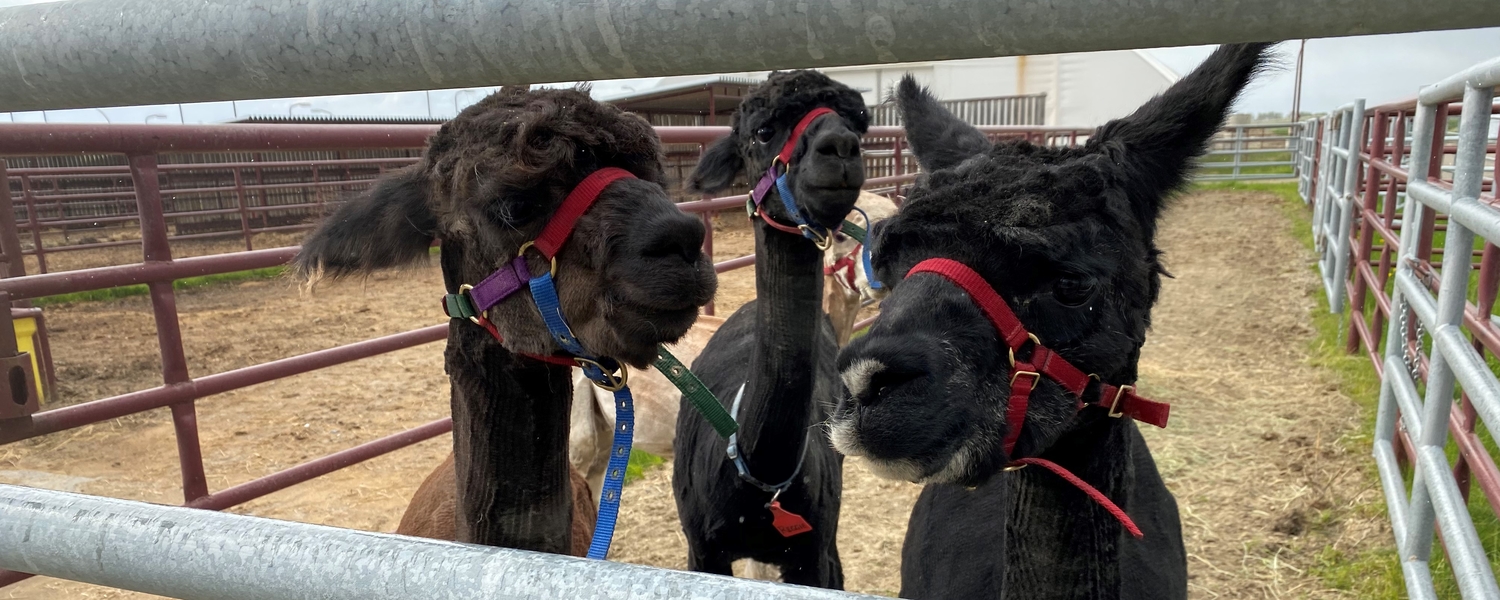
Alpacas
Meet our Alpaca Herd
At the UCVM we are very lucky to have a herd of alpacas. Alpacas are herd animals so it is important that they are not housed alone, as this can result in unneeded stress on the animals. At the UCVM we have an alpaca herd of five alpacas all with a distinct personality. It is the highlight of many veterinarians, technicians as well as students’ days to work with our alpaca herd.
Alpaca Herding
Alpaca herding is an important skill, as it is necessary for catching and haltering an alpaca. Alpacas are very clever so when herding them, you want to make sure you do not give them an escape route or they will take it. Herding is assisted by using herding sticks (wands), ropes, and the outstretched arms of the herder. By using these tools, the distance between the herder and the animal is increased so the animals feel less threatened. This allows for a low stress handling environment.
Alpaca Haltering
Alpaca haltering is an important skill as this allows you to lead the animal in a safe and controlled way that is also low stress to the animal. When placing a halter on the nose of an alpaca it is critical to make sure the nose band is high on the snout of the alpaca. This is critical to not restrict the cartilaginous nasal pathway and restrict the breathing of the alpacas. Alpacas, like horses, can only breathe through their nose, so restricting this can have dire consequences.
Alpaca Facts
Alpacas are a domesticated species that are a part of the camelid family. Camelids include alpacas, dromedary camels, Bactrian camels, guanacos, and vicuñas. Alpacas are originally from South America and are used for their fiber and their meat, but in recent years have become more popular as pets.
